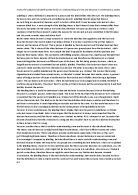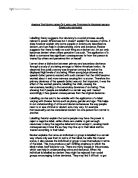The interactionist, Jock Young, provides a significant assessment of the role of subcultures in crime and deviance. Young’s perspective is that of Howard S. Becker who claims that “deviant behaviour is behaviour that people so label”. Jock young concentrated on the hippie subculture in Notting Hill, London and their consumption of marijuana. Due to this belief that the police viewed hippies as dirty and undesirable, the views on their behaviour were considerably tainted. According to Young, due to the police’s harsh reactionary attitude towards the hippies smoking marijuana, the hippies, Young argued seemed to see this as some sort of encouragement of deviant behaviour. This, the interactionist Young argued eventually led to a self-fulfilling prophecy where the hippies consumed more illegal drugs partly as a reaction to the police and partly because the were expected to do so. So, the hippies then formed subcultures, which they would use to rebel, against the police. Within these subcultures, consumption of drugs was the norm and therefore, in this sense the deviant behaviour was legitimised. As Becker suggests, being part of a criminal subculture completes a criminal career.
However, many consider Young’s findings to be heavily flawed. Young only studies the effects of being caught and does not consider why people commit crimes in the first place anyway. Young also fails to place any blame on the criminals themselves and instead places complete blame on the police and other agents of social control. Young’s results have been collected from a very small sample, which detracts from the study’s reliability.
Paul Willis in “Learning To Labour”, recognised two different subcultures within a school whilst studying the education system. The first he found was a “lobes” subculture, which was made up of those who concurred with school and worked hard in order to obtain high status occupations. The other subculture he found was the “lads” subculture, which contained those, who rejected school and the desire to learn. They wanted to enter the manual work as soon as they could leave school. Willis took from this that the “Lads” were seeing through the capitalist superstructure. They endeavoured to resist the capitalist oppression, which they saw by going into jobs, which could only offer them manual labour. This outlook adopted by the “lads”, Willis saw as a possible reason for crime and deviance. He claimed that if the “lads” denied the norms and values of the education system, then they would eventually reject the norms and values of wider society. This may lead to a criminal lifestyle, and an increased reliance on the “lads” subculture.
Criticisms directed at Willis’ study include the fact that he used a very small sample for his study. He did not interview a range of age groups in the Boys’ school he used, he only interviewed one year of the school. This detracts from the reliability of the study. Additionally, Willis only used one school to conduct his study whereas a whole range of schools from across the country would have produced different results that might not have necessarily support the findings of Willis after research in just one school. Willis’ study has also been accused of being very patriarchal, as he chooses to exclude girls from his study. He therefore seems to ignore the part of women in crime and deviance.
Although subcultural theories do provide a significant understanding of crime and deviance they do not state why some others who are outside these subcultures commit crimes. The subcultural sociologists also overlook the fact that the majority of people who face some level of unjustness, conform and do not enter into illegitimate lifestyles. Therefore, one cannot rely upon subcultural theories alone to understand crime and deviance although if a sociologist combined subcultural theories of crime and deviance with other sociological theories on crime and deviance then he or she will gain a much broader, clearer and more accurate understanding of crime and deviance.







